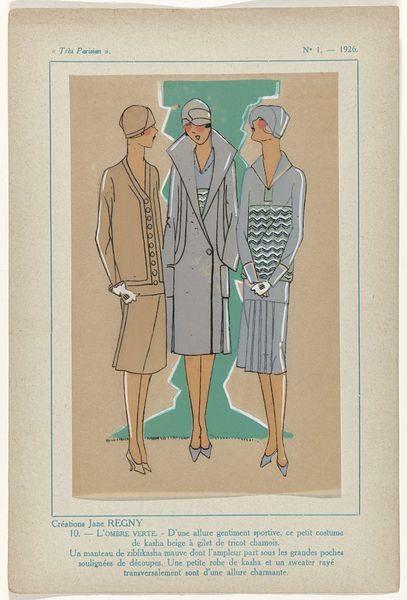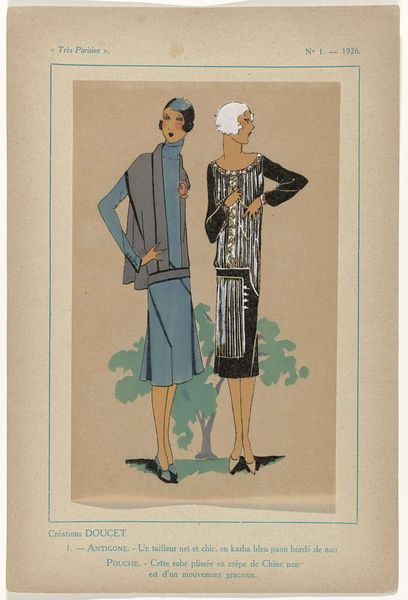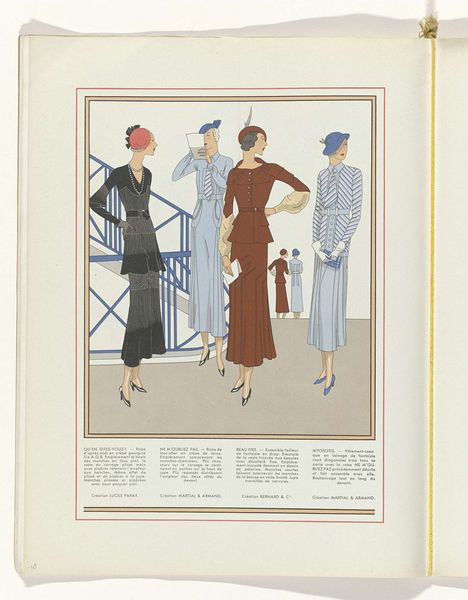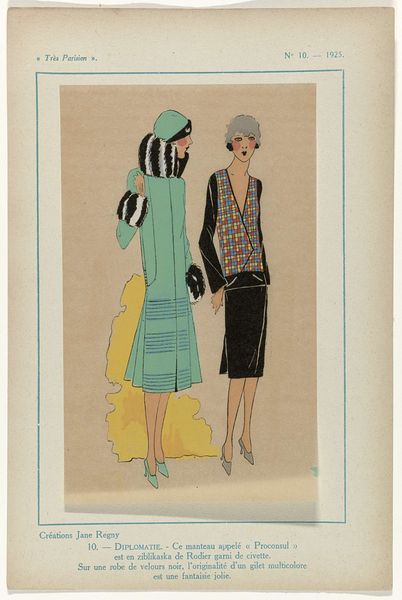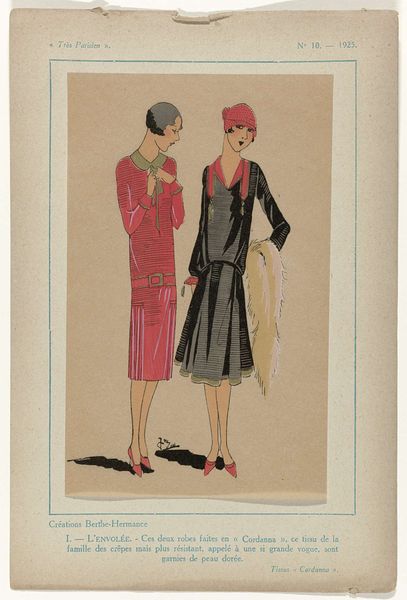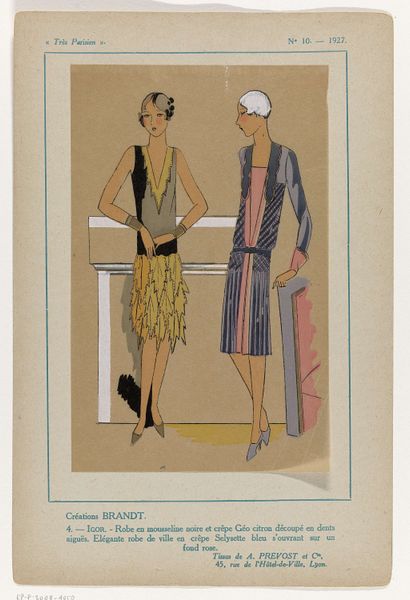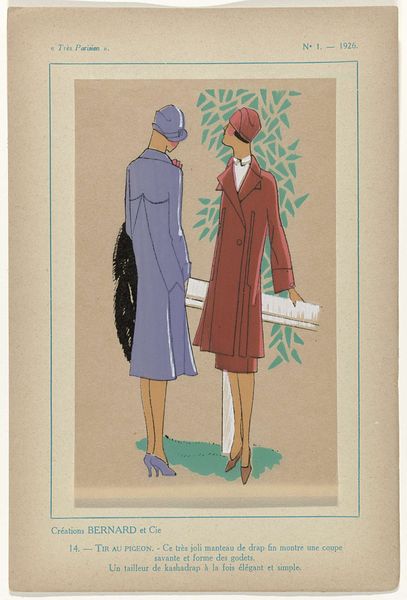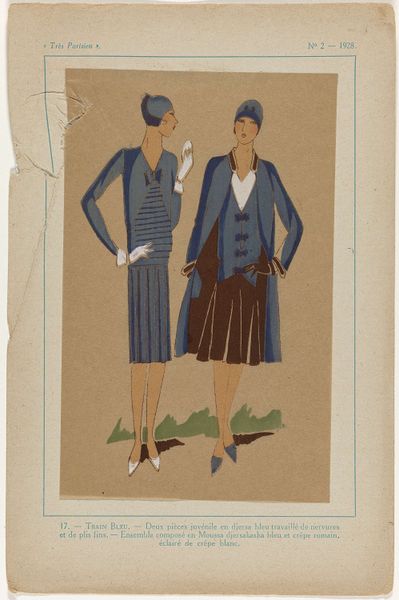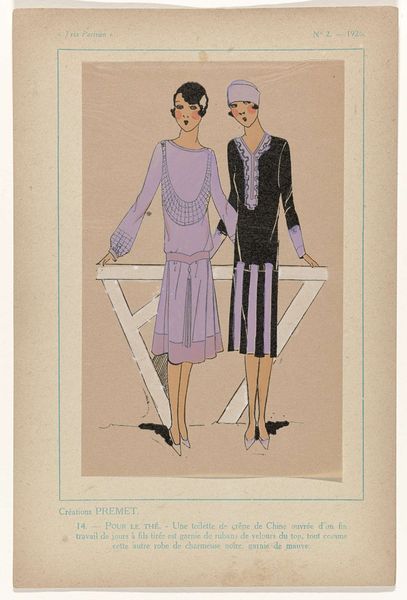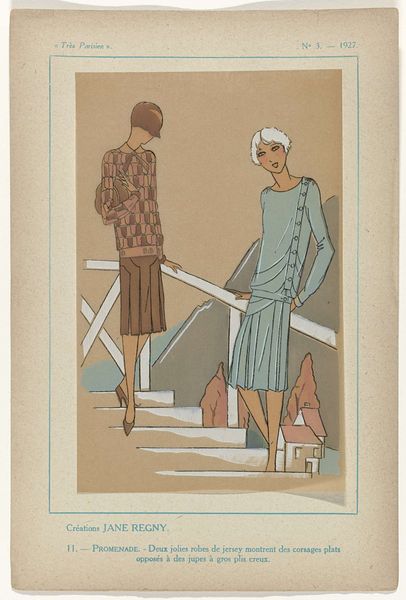
drawing, paper, ink
#
portrait
#
art-deco
#
drawing
#
figuration
#
paper
#
historical fashion
#
ink
#
watercolour illustration
#
dress
Dimensions: height 267 mm, width 176 mm
Copyright: Rijks Museum: Open Domain
This fashion plate, titled "Très Parisien, 1928, No. 2," presents three figures in the flapper style of the late 20's. It’s probably a stencil or a print, with added hand coloring to accent the garments, and the whole piece presents a study in the making of style, design, and commerce. What strikes me are the colors: restrained, muted shades suggesting the fabrics are light, comfortable jersey. The textural interplay between the flat colored planes, fine hatch marks and the use of light washes of tone creates a captivating surface. Look closely, and you'll see how the artist builds up subtle shifts in tone to model the dresses and the figures within them, but the whole piece is more like architecture than an image. This is what fashion illustration can do, it gives a glimpse into a moment in time and a certain aesthetic that, almost a century later, still influences fashion and art. Think about how contemporaries like Erte pushed figuration in a similar direction. It reminds us that art is always in dialogue, an ongoing conversation across generations.
Comments
No comments
Be the first to comment and join the conversation on the ultimate creative platform.
